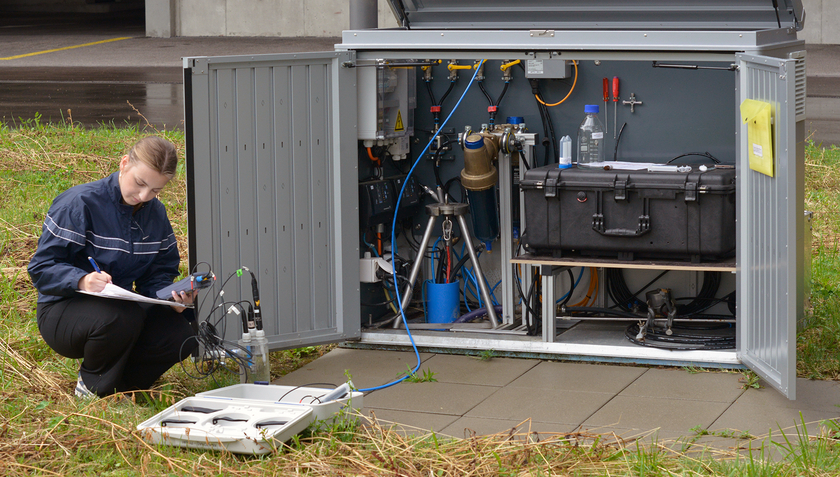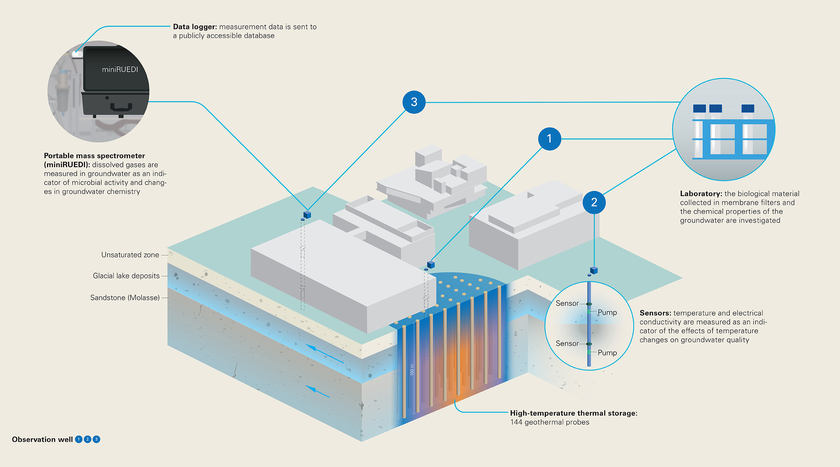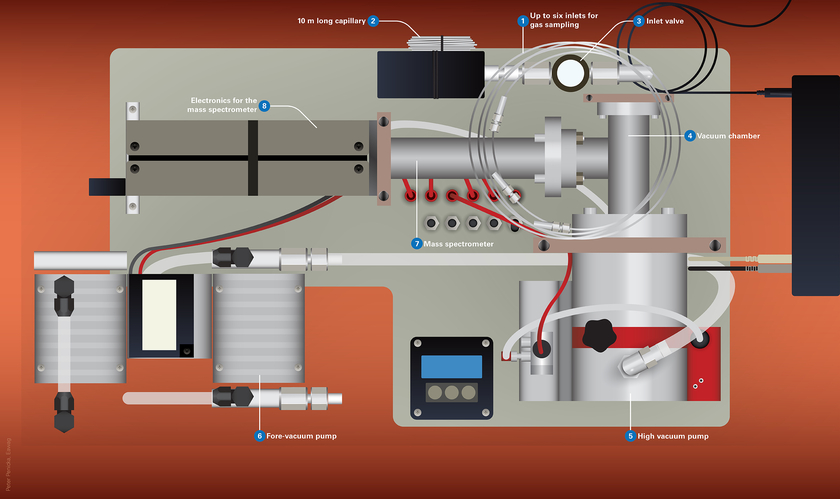How groundwater reacts to thermal storage

A new type of high-temperature thermal storage system was built to provide a more sustainable supply of heat for the Empa and Eawag site in Dübendorf, which promotes the decarbonisation of the energy system. A research project is investigating how this affects groundwater.
Via the 144 geothermal probes of the high-temperature thermal storage system waste heat generated in summer, for example when cooling buildings, is channelled underground and stored there. In winter, this energy is extracted from the ground for heating. The heat reservoir is designed so that up to 50 degrees can be reached locally in the ground. How does this affect the groundwater? Eawag, in collaboration with Empa, aims to answer this question as part of the ARTS (Aquifer Reaction to Thermal Storage) project. The federal government and several cantons are supporting the project.
Three boreholes were drilled around the heat reservoir, which are now being used to pump up groundwater to the surface from various depths for analysis (see diagram). “The aim is to find out which organisms live there, what the groundwater chemistry looks like and how these two aspects react to the operation of the heat reservoir over time,” says Andrés Velásquez-Parra, who is responsible for coordinating ARTS. Based on these findings, the researchers hope to derive recommendations for underground heat storage that enable sustainable use of the technology and could potentially allow a little more flexibility than previously possible. The current rule is that the groundwater temperature 100 metres downstream of a thermal storage facility may not change by more than three degrees compared to the natural state (see also article “Cities: heat islands underground too”.
Measurements within the ARTS project have been ongoing since July 2024. At that time, the high-temperature thermal storage system was not yet in operation. This allowed the researchers to accurately record the initial conditions over a period of several months before the waste heat from the cooling system began to be stored underground in May 2025. The project is currently scheduled to run for three years, but the researchers have installed everything in such a way that further operation is possible.
Created by Barbara Vonarburg for the Info Day Magazine 2025





